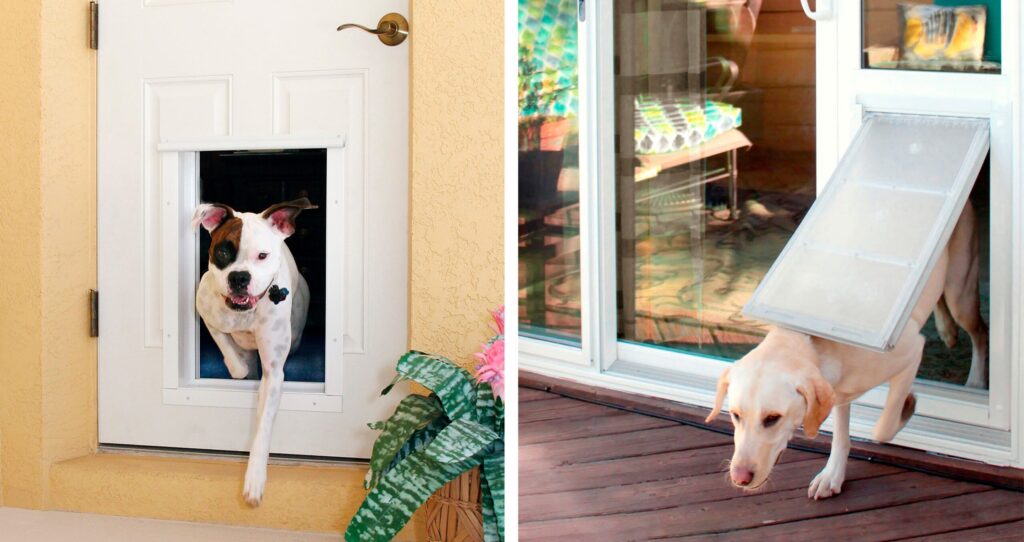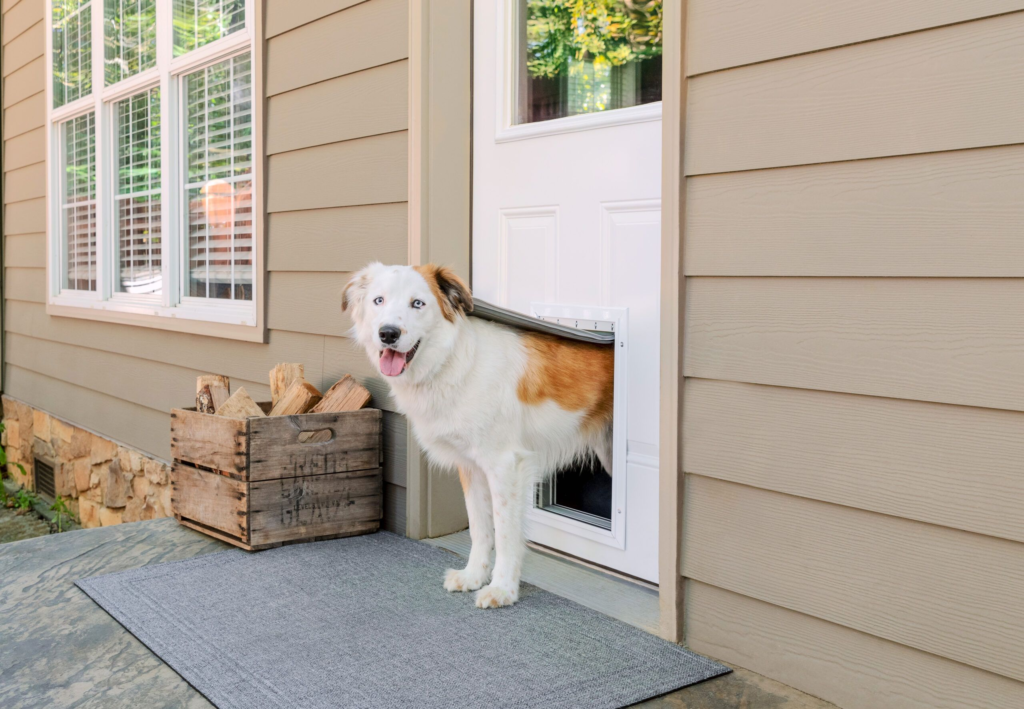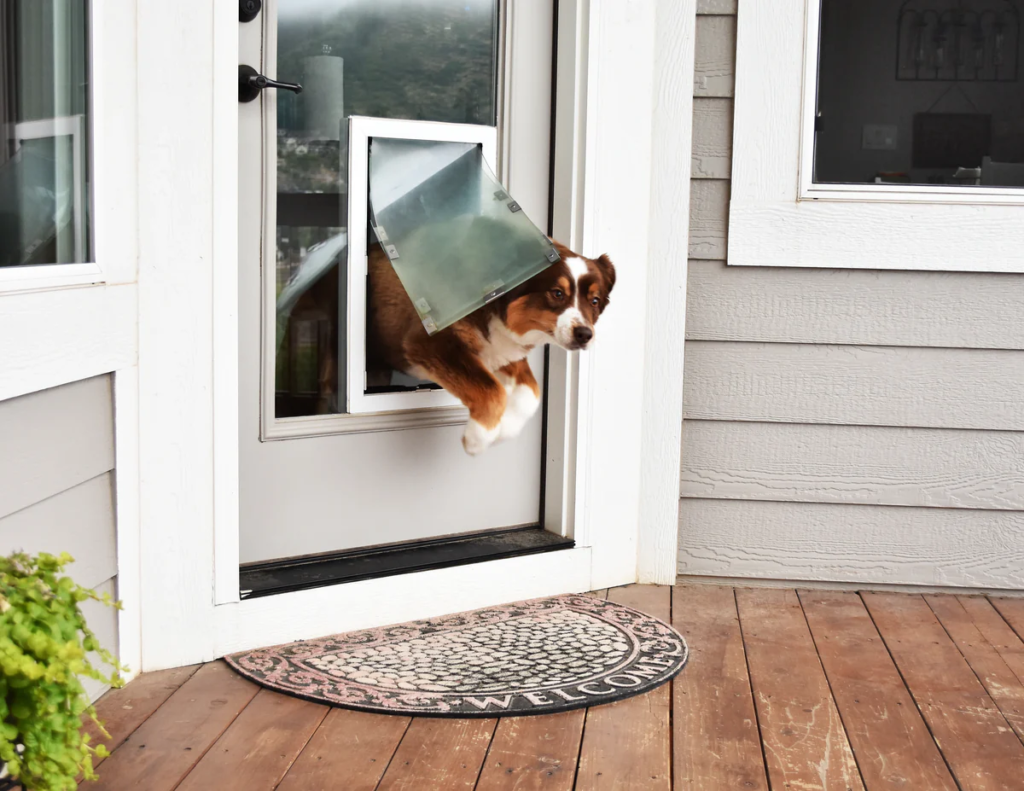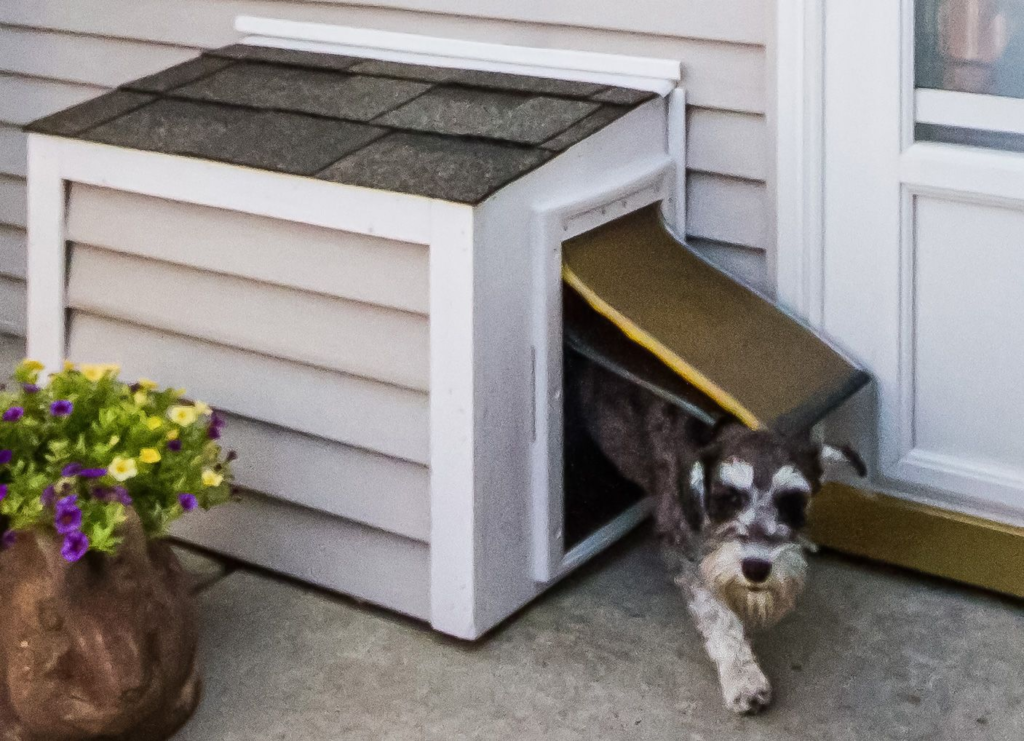Exterior Dog Doors

Exterior Dog Doors:- Having a dog as a part of your family can be one of the greatest joys in life. Yet, owning a dog comes with a few challenges, and one of the most common is the constant back-and-forth of letting your dog in and out of the house. Most pet owners can relate to the frequent interruptions that come with opening the Exterior Dog Doors for a pup that’s eager to explore or use the bathroom. Installing a dog door can solve this problem, providing your furry friend with easy access to the outdoors while saving you the hassle. However, some homeowners are hesitant about dog doors due to concerns about energy efficiency and security.
One notable story illustrating this concern comes from Tom Silva, a general contractor for *This Old House*. His 90-year-old mother once crawled through the family shar-pei’s dog door after getting locked out of the house. While the story provides a good laugh, it also serves as a reminder that dog doors can sometimes pose security risks. Fortunately, dog door designs have evolved, offering several options to ensure your home remains secure and energy-efficient.

Types of Dog Doors
Exterior Dog Doors come in various styles to suit different needs. Understanding the options available can help you choose the best fit for your home and dog.
1. Flap Doors
Flap doors are the most common and affordable option. They are typically installed in an existing door or wall, featuring a flexible flap that a dog can push aside to enter or exit. These doors are simple to use and require minimal installation. However, more advanced models include double flaps or magnetic seals, which help with insulation by preventing outside air from entering the home. This design can reduce energy loss, addressing a common concern for homeowners who want to keep their heating and cooling systems efficient.
2. Microchip-Activated Doors
A more high-tech option is the microchip-activated dog door. This type of door only opens when it detects a signal from your dog’s microchip or collar, ensuring that no unwanted animals can enter your home. Raccoons, stray animals, or other neighborhood critters won’t be able to sneak in uninvited. These doors typically require electricity or batteries to operate. If power outages are common in your area, it’s worth considering a battery-operated model that alerts you when batteries are low. Although these doors tend to be more expensive, the added security and convenience can be well worth the investment.
3. Sliding Door Inserts
If you have a sliding glass door, there’s no need to make permanent changes to your home. Sliding door inserts offer a convenient solution that doesn’t require cutting into walls or doors. These inserts fit into the frame of a sliding door and create an entryway for your dog while leaving room for people to walk through. This option is especially great for renters who cannot make permanent modifications to their homes. However, sliding door inserts are best suited for smaller dogs, as larger dogs may need bigger, more expensive versions that can restrict the door’s function.
4. Customized Sliding or French Doors
For a more stylish solution, you can purchase sliding or French doors with built-in dog doors. These custom options provide an elegant, seamless look and function, but they do come at a higher price point. For those who prioritize aesthetics and don’t mind the extra cost, this option offers a practical and visually appealing way to give your dog freedom.

Top Dog Door Products
When selecting the best dog door for your home, consider the following highly-rated products:
1. PetSafe Plastic Pet Door
This simple yet effective option is a single-flap door that can be installed in doors made of wood, PVC, or metal. It’s designed for interior or exterior doors and comes in four sizes to accommodate different dog breeds. Its flexible flap is easy for pets to use, and the door’s affordable price makes it an excellent choice for homeowners looking for a no-fuss solution.
2. PetSafe Wall Entry Aluminum Pet Door
If installing a dog door in a wall suits your home layout better, the PetSafe Wall Entry Aluminum Pet Door is a great option. This model allows you to create an exit through almost any wall in your home, which can be helpful if your home’s doors aren’t in an ideal location for a dog door. This door includes double flaps for insulation, ensuring your home remains energy efficient. Many reviewers have praised its easy installation.
3. Hale Pet Door Model
Hale Pet Doors offers customizable options that allow you to choose the size, frame color, number of flaps, and more, ensuring the door suits your home and your dog perfectly. Whether you have a large dog or multiple pets, Hale doors provide the flexibility to create a secure and comfortable entryway. These doors are also highly rated for their energy efficiency, helping to maintain your home’s interior temperature while allowing your dog the freedom to come and go.

Choosing the Right Dog Door
With so many options available, choosing the right dog door can feel overwhelming. Here are some important factors to consider:
1. Are You Willing to Cut a Hole in Your House or Door?
If you’re comfortable with making permanent modifications to your home, a wall-mounted dog door gives you more flexibility in placement. This can be ideal for those with layouts where placing a dog door in an existing door doesn’t make sense. However, installing a wall-mounted door is more complex and may require professional installation.
For homeowners who prefer a simpler solution, a door-mounted dog door is easier to install and still allows for easy access for your dog. Installing in a door often takes less time and can be done as a DIY project.
2. Do You Have a Sliding Door?
Sliding door inserts provide a convenient, non-permanent option for homes with patio doors. However, keep in mind that these inserts can limit the usability of the sliding door and are generally best for small dogs.
3. What Size is Your Dog?
The size of your dog will largely determine what type of dog door you need. A door that’s too small will deter your dog from using it, while a door that’s too large may pose security concerns. Make sure the door flap is appropriately sized for your dog, considering both the width and the height of the opening.
4. Do You Have Multiple Dogs?
Households with dogs of different sizes should consider a dog door that accommodates all pets. In most cases, the door needs to be large enough for the biggest dog, but low enough to the ground for the smallest one.
Conclusion
Dog doors provide a simple solution to the everyday challenge of letting your dog in and out of the house. Whether you prefer a basic flap door or a high-tech microchip-activated option, there are plenty of designs that balance convenience, energy efficiency, and security. By carefully considering your dog’s needs and your home’s setup, you can find the perfect dog door to keep both you and your furry friend happy.
Also Read:-




